
Energy recovery device manufacturer Energy Recovery (NASDAQ: ERII) reported Q2 CY2025 results exceeding the market’s revenue expectations, with sales up 3.1% year on year to $28.05 million. Its non-GAAP profit of $0.07 per share was significantly above analysts’ consensus estimates.
Is now the time to buy Energy Recovery? Find out by accessing our full research report, it’s free.
Energy Recovery (ERII) Q2 CY2025 Highlights:
- Revenue: $28.05 million vs analyst estimates of $25.44 million (3.1% year-on-year growth, 10.3% beat)
- Adjusted EPS: $0.07 vs analyst estimates of $0.02 (significant beat)
- Adjusted EBITDA: $4.4 million vs analyst estimates of $1 million (15.7% margin, significant beat)
- Operating Margin: 5.3%, up from -7.4% in the same quarter last year
- Free Cash Flow Margin: 14.3%, down from 28.9% in the same quarter last year
- Market Capitalization: $742.8 million
Company Overview
Having saved far more than a trillion gallons of water, Energy Recovery (NASDAQ: ERII) provides energy recovery devices to the water treatment, oil and gas, and chemical processing sectors.
Revenue Growth
Reviewing a company’s long-term sales performance reveals insights into its quality. Any business can have short-term success, but a top-tier one grows for years. Unfortunately, Energy Recovery’s 5.3% annualized revenue growth over the last five years was tepid. This wasn’t a great result compared to the rest of the industrials sector, but there are still things to like about Energy Recovery.
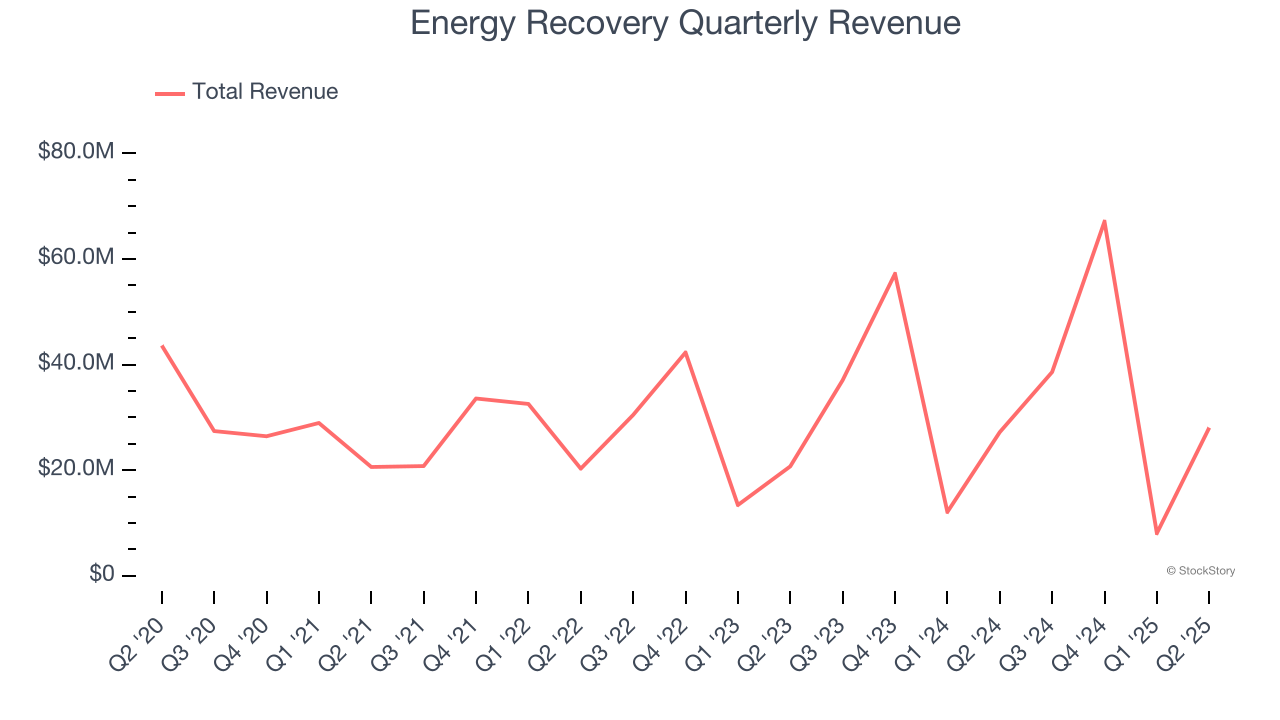
We at StockStory place the most emphasis on long-term growth, but within industrials, a half-decade historical view may miss cycles, industry trends, or a company capitalizing on catalysts such as a new contract win or a successful product line. Energy Recovery’s annualized revenue growth of 15.2% over the last two years is above its five-year trend, suggesting its demand recently accelerated. 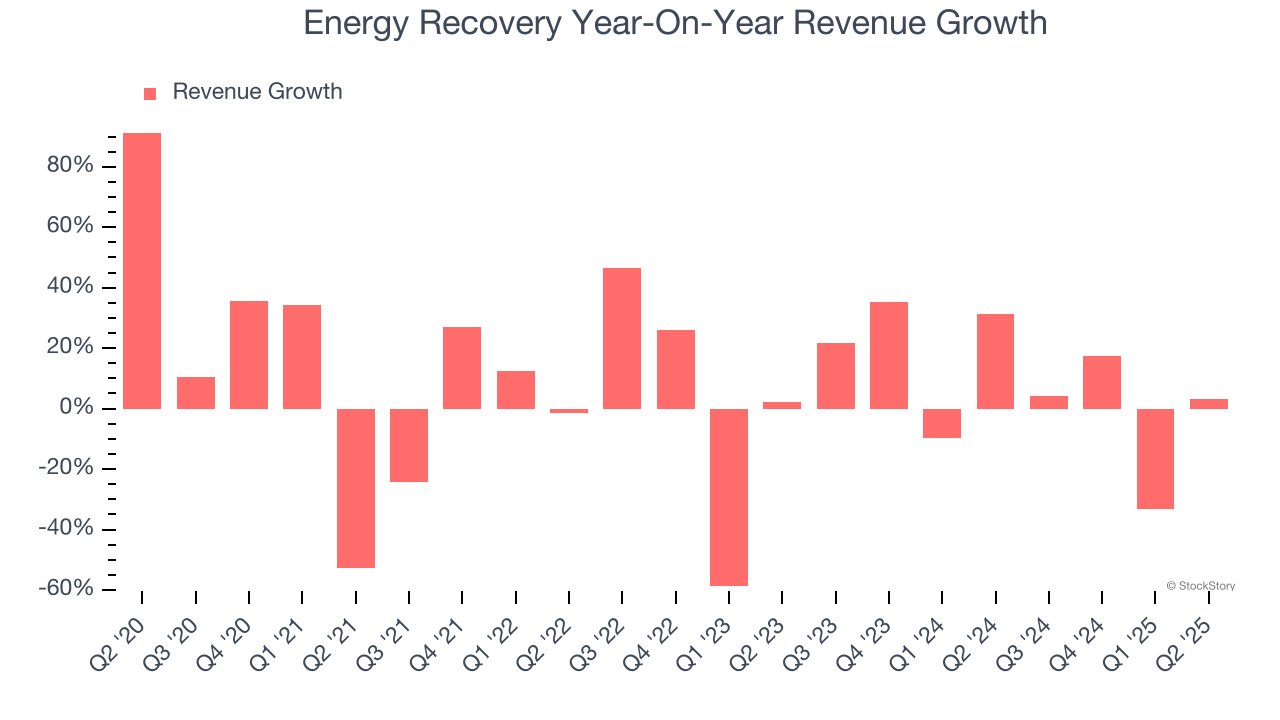
This quarter, Energy Recovery reported modest year-on-year revenue growth of 3.1% but beat Wall Street’s estimates by 10.3%.
Looking ahead, sell-side analysts expect revenue to grow 17.2% over the next 12 months, an improvement versus the last two years. This projection is eye-popping and implies its newer products and services will spur better top-line performance.
Today’s young investors won’t have read the timeless lessons in Gorilla Game: Picking Winners In High Technology because it was written more than 20 years ago when Microsoft and Apple were first establishing their supremacy. But if we apply the same principles, then enterprise software stocks leveraging their own generative AI capabilities may well be the Gorillas of the future. So, in that spirit, we are excited to present our Special Free Report on a profitable, fast-growing enterprise software stock that is already riding the automation wave and looking to catch the generative AI next.
Operating Margin
Energy Recovery has been an efficient company over the last five years. It was one of the more profitable businesses in the industrials sector, boasting an average operating margin of 13.4%. This result isn’t surprising as its high gross margin gives it a favorable starting point.
Analyzing the trend in its profitability, Energy Recovery’s operating margin rose by 1.6 percentage points over the last five years, as its sales growth gave it operating leverage.
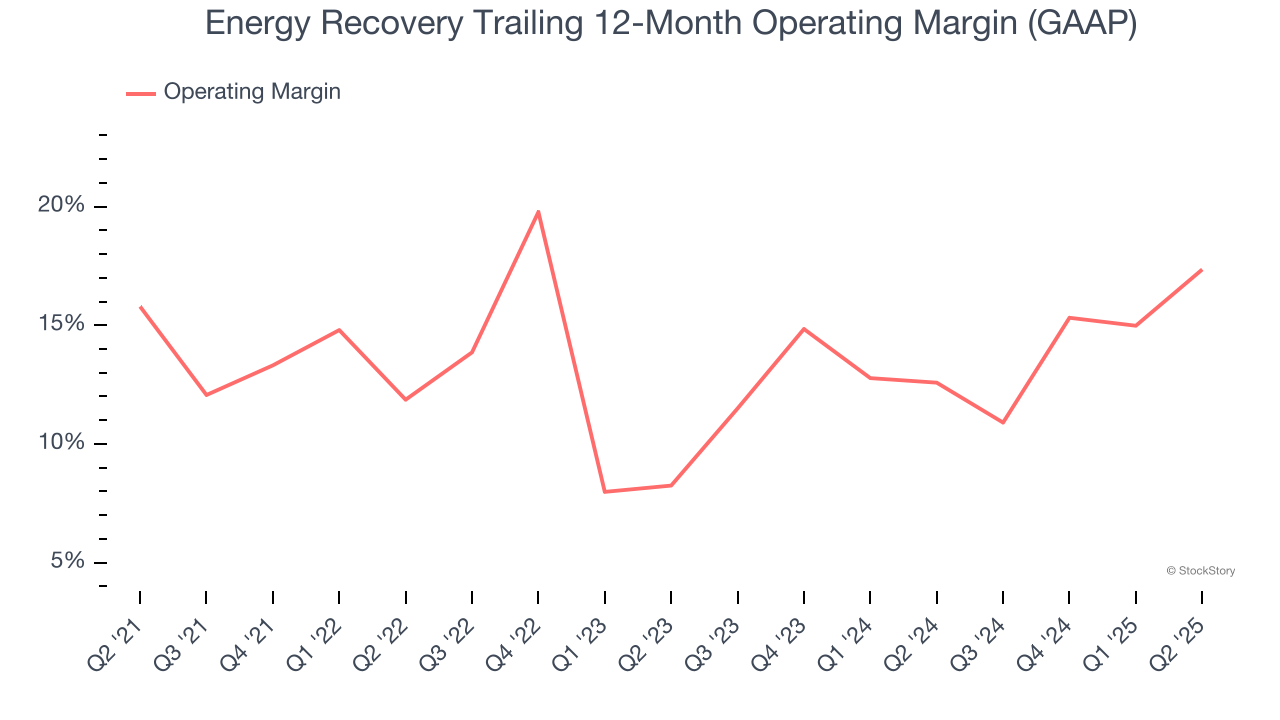
This quarter, Energy Recovery generated an operating margin profit margin of 5.3%, up 12.7 percentage points year on year. The increase was solid, and because its operating margin rose more than its gross margin, we can infer it was more efficient with expenses such as marketing, R&D, and administrative overhead.
Earnings Per Share
Revenue trends explain a company’s historical growth, but the long-term change in earnings per share (EPS) points to the profitability of that growth – for example, a company could inflate its sales through excessive spending on advertising and promotions.
Energy Recovery’s EPS grew at a decent 8.6% compounded annual growth rate over the last five years, higher than its 5.3% annualized revenue growth. This tells us the company became more profitable on a per-share basis as it expanded.
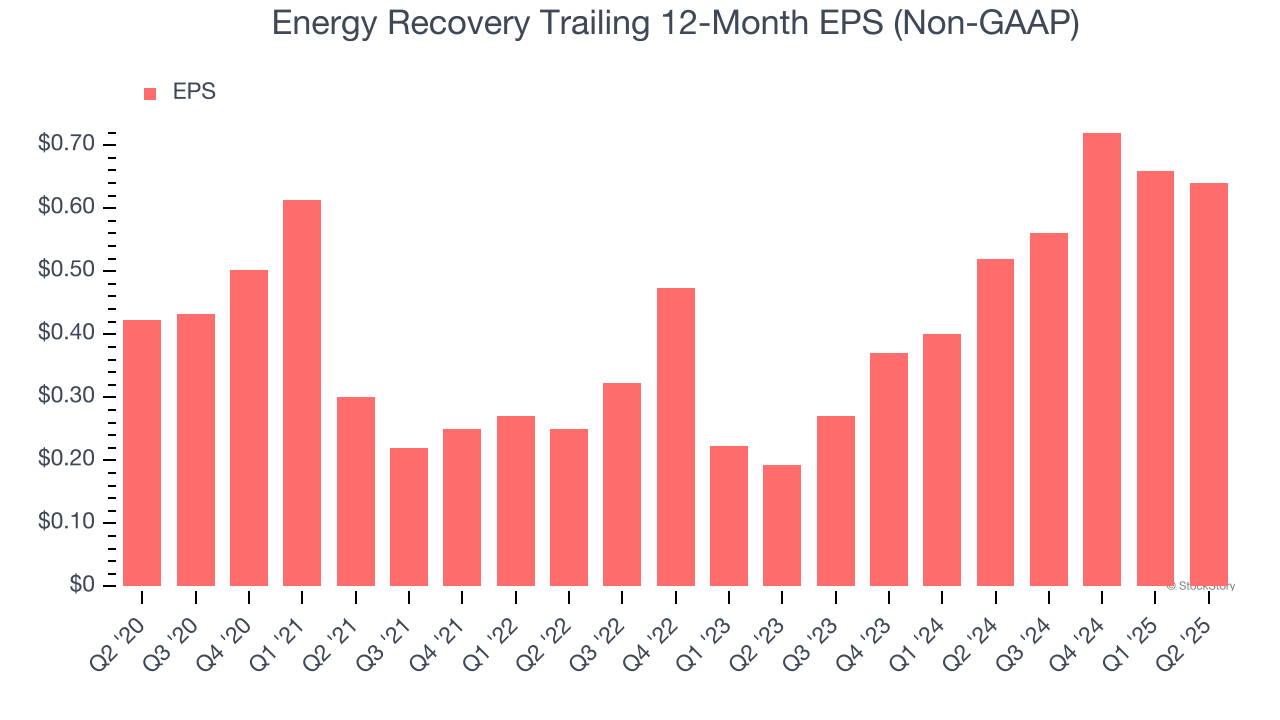
We can take a deeper look into Energy Recovery’s earnings quality to better understand the drivers of its performance. As we mentioned earlier, Energy Recovery’s operating margin expanded by 1.6 percentage points over the last five years. On top of that, its share count shrank by 3.3%. These are positive signs for shareholders because improving profitability and share buybacks turbocharge EPS growth relative to revenue growth. 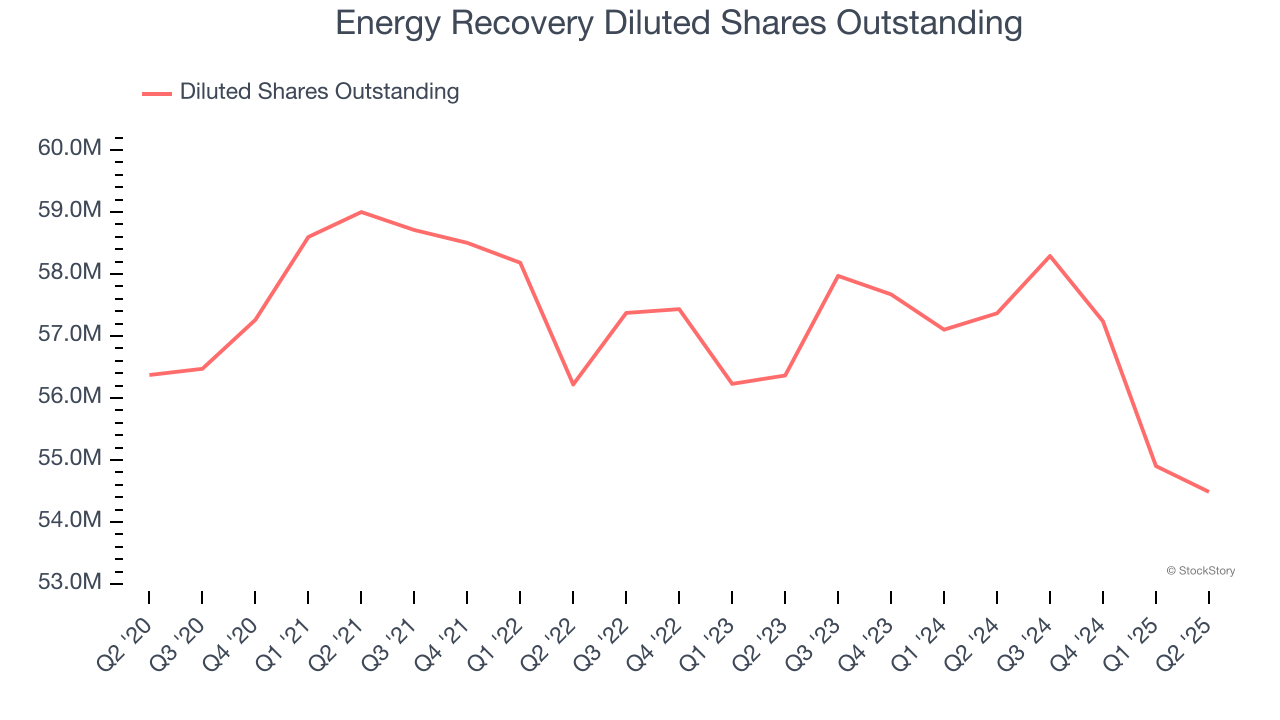
Like with revenue, we analyze EPS over a shorter period to see if we are missing a change in the business.
For Energy Recovery, its two-year annual EPS growth of 82% was higher than its five-year trend. This acceleration made it one of the faster-growing industrials companies in recent history.
In Q2, Energy Recovery reported adjusted EPS at $0.07, down from $0.09 in the same quarter last year. Despite falling year on year, this print easily cleared analysts’ estimates. Over the next 12 months, Wall Street expects Energy Recovery’s full-year EPS of $0.64 to grow 16%.
Key Takeaways from Energy Recovery’s Q2 Results
We were impressed by how significantly Energy Recovery blew past analysts’ EPS expectations this quarter. We were also excited its EBITDA outperformed Wall Street’s estimates by a wide margin. Zooming out, we think this quarter featured some important positives. The stock traded up 5% to $14.29 immediately after reporting.
Indeed, Energy Recovery had a rock-solid quarterly earnings result, but is this stock a good investment here? We think that the latest quarter is only one piece of the longer-term business quality puzzle. Quality, when combined with valuation, can help determine if the stock is a buy. We cover that in our actionable full research report which you can read here, it’s free.





